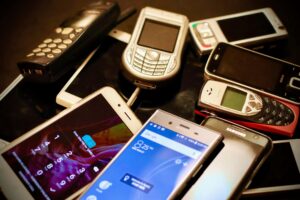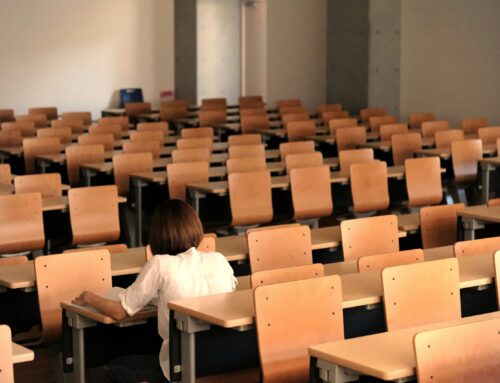Introduction

Cellphones have always been the hot topic amongst teenagers alike. Conversations of the latest model, all the upgrades it contains, and where to find the cutest cellphone cases run rampant throughout schools. The real problem lies within the constant usage of cellphones in classrooms, disrupting the sole student and others around them.
Cellphone Bans Across Schools
Cellphone bans have steadily increased across school districts over the past couple of years. Beginning in 2018, France started implementing laws regarding cellphone restrictions in schools, which later spread to the rest of the United Kingdom. For the upcoming school year, 2025-2026, 200 French schools will take these bans slightly further by taking a complete “digital break”. Nearly 50,000 students will be forced to drop off their phones at the beginning of school and pick them up at the end of the day.
Meanwhile, on the other side of the globe, the United States has begun to catch up to cellphone bans in schools statewide. State lawmakers, as well as governors, have been racing to push cellphone regulations in schools. Many states have taken different approaches to regulating phone usage inside classrooms. Several states have opted to ban phones entirely within the walls of the school or inside the classroom, while some states have decided to use extra funding for cellphone containers for students to leave their phones in for the majority of the day. States are still taking strides to push cellphone bans in their schools, but there is still progress to be made.
Why Are Schools Heading in This Direction?
Cellphones are considered a huge distraction both inside and outside of the classroom. Over 70 percent of teachers have admitted that student cellphone usage is a huge problem. Commonly used apps such as Snapchat, Instagram, and TikTok distract not only the student during class time, but can potentially disrupt the students around them from their education. But, it’s not just teachers that agree that phones cause a distraction, according to a global survey in 2022, one out of three students reported they were distracted by phones in almost every lesson.
A big reason for the crackdown on cellphones in schools is due to the increase in cyberbullying across all previously mentioned platforms. In many cases, phones can be used to bully, harass, and exploit fellow classmates, which creates an unsafe learning environment for all involved. While taking away cellphones may not entirely solve the problem of bullying in our schools, it’s a step in the right direction of making our schools safer for our children and their peers.
Benefits of Cellphone Bans
Teachers have stated that there is a notable difference in students’ attention spans before and after implementing cellphone bans. Teachers have also reported being able to retain over 10 minutes of instruction per class period. Teachers are forced to compete with cellphones daily, causing burnout and even early retirement for some. Cellphone bans not only improve a student’s education but also improve the lives of teachers and the integrity of the job.
Richardson Independent School District in Texas has reported that student suspensions have dropped between 15 and 54 percent for schools that have regulated cellphone restrictions. Some schools are reporting a decrease in cyberbullying and physical altercations between students.
Challenges
Cellphone restrictions have been shown to improve cases of bullying and harassment in schools, but it doesn’t completely solve the problem. Students have access to school-issued laptops, with teachers reporting that they still cause a lack of attention, as they can cyber harass other students. Since 2019, Google Docs has documented over 8.5 million instances of cyberbullying by school-administered accounts, and over a million documented cases on Microsoft accounts.
Other challenges include not properly teaching students about appropriate cellphone usage. Experts worry about completely removing phones during school instead of properly educating students on how to properly manage their time between class and their handheld devices. Their concerns lie in the fact that this would potentially take away a learning opportunity for students to find a healthy balance between online spaces and the real world, while teaching children that phones are meant to be hidden and not discussed.
Conclusion
Cellphone bans are a touchy subject, with some being in full agreement or outright refusal. While cellphone restrictions can improve learning environments for students and staff, it’s important to emphasize conversations around technology use, rather than banning them and keeping them hidden.
Publishing Solutions Group
PSG stays at the forefront of educational trends by actively monitoring developments—this includes cellphone bans in schools. We routinely review news and research studies to understand the evolving landscape.
For instance, we’ve tracked states such as Massachusetts, Texas, Missouri, Ohio, Oklahoma, New Hampshire, and California implementing or debating “bell-to-bell” bans on student devices, often using Yondr pouches or approved storage solutions to reduce distractions and improve mental health.
By maintaining this heightened awareness, PSG ensures that our knowledge can impact our clients by being informed by the latest research and policy shifts. We incorporate this insight into our editorial and professional development work, helping clients navigate and reflect current policies to support their content development.
Photo by Eirik Solheim on Unsplash




